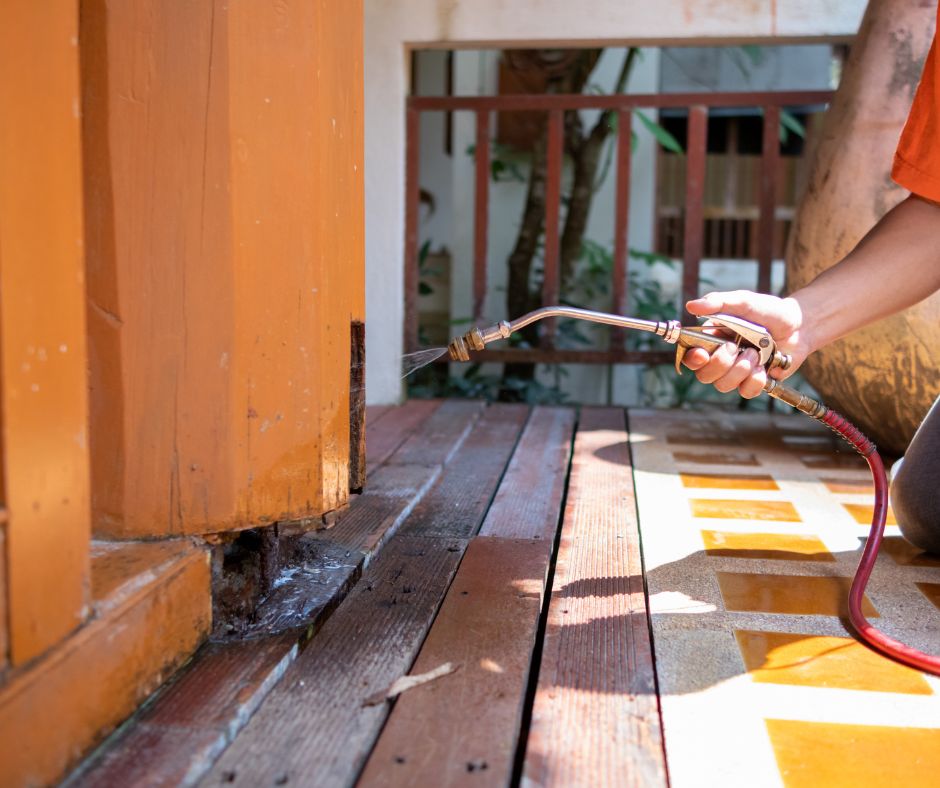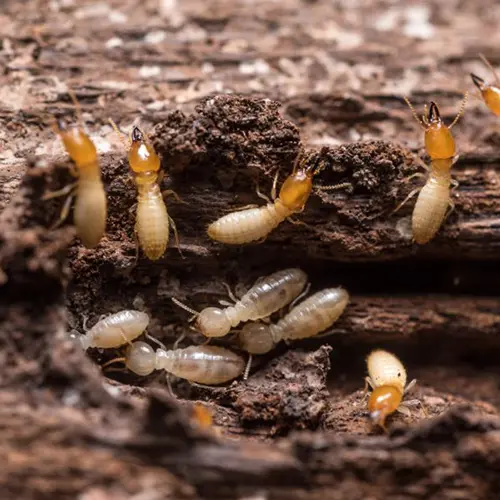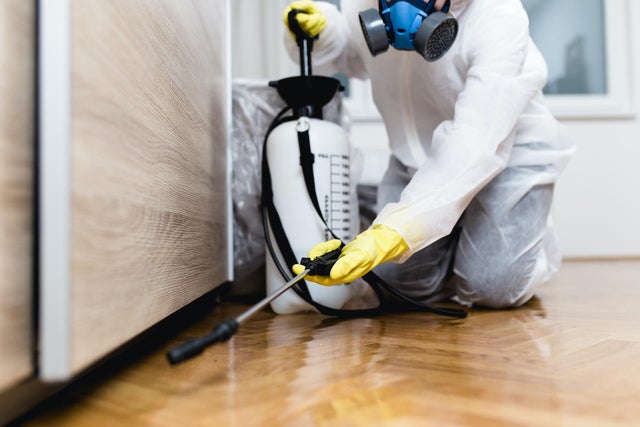Trusted Wildlife Removal Services in Port Charlotte to Securely Remove Pests
Learn Concerning the current Advancements in Bug Control and Just How to Apply Efficient Treatment Solutions
In recent years, the area of insect control has experienced substantial innovations, driven by the need for lasting and efficient treatment options. Innovative strategies such as Integrated Insect Monitoring (IPM) integrate environmentally friendly techniques with advanced modern technology, enhancing both effectiveness and ecological responsibility.
Eco-Friendly Insect Control Options
In the last few years, the need for eco-friendly insect control choices has actually risen as home owners and companies alike look for lasting choices to traditional chemical treatments. This shift is driven by growing environmental understanding and a need to decrease the health and wellness dangers related to artificial chemicals.

Environment-friendly bug control methods incorporate a variety of techniques that prioritize using natural materials and methods. Integrated Pest Monitoring (IPM) is one such technique, combining organic, cultural, and mechanical tactics to handle insect populaces while minimizing reliance on chemicals (Wildlife removal services). This holistic approach highlights prevention with habitat manipulation and the introduction of natural killers, consequently promoting a well balanced ecological community
One more popular alternative is making use of herb pesticides derived from plants, which tend to be much less damaging to non-target organisms. Products like neem oil and diatomaceous earth have actually obtained traction for their effectiveness in controlling parasites while presenting minimal dangers to human wellness and the environment.
Furthermore, exemption techniques, such as securing entry points and preserving sanitation, play a vital duty in environment-friendly parasite management. By embracing these sustainable techniques, companies and people can successfully take care of pests while promoting a healthier world for future generations.
Smart Modern Technology in Pest Management
Advancement is improving the landscape of parasite monitoring, with smart technology emerging as a critical pressure in boosting performance and effectiveness - Wildlife removal services. The integration of Web of Points (IoT) tools, man-made intelligence (AI), and data analytics is reinventing exactly how insect control experts approach infestations
Smart traps equipped with sensing units can identify parasite task in real-time, sending out instant notifies to operators. This enables prompt feedbacks, lessening damages and decreasing the requirement for comprehensive treatments. Additionally, AI algorithms analyze historic data to predict pest actions, making it possible for aggressive interventions based on ecological problems and infestation patterns.
Drones and automated lorries are additionally playing a considerable role in insect management, giving airborne assessments of large areas, recognizing hotspots, and even distributing targeted treatments. These innovations not only streamline procedures however likewise enhance security by limiting human direct exposure to potentially harmful chemicals.
In addition, mobile applications equip customers to keep an eye on pest task and access specialist guidance, cultivating a collective approach to pest administration. Overall, the fostering of smart modern technology is setting a brand-new requirement in insect control, stressing data-driven decisions and lasting practices that inevitably profit both property owners and specialists alike.
Integrated Pest Administration Strategies
Integrated Insect Monitoring (IPM) utilizes an alternative technique to pest control, combining various methods to effectively manage bug populaces while minimizing dangers to human health and wellness and the setting. IPM focuses on understanding the pest life process, their all-natural adversaries, and the ecosystem in which they flourish.
One of the essential parts of IPM is keeping track of pest populations with normal examinations and data collection. This permits the identification of parasite limits, determining when intervention is necessary. Cultural methods, such as crop turning, hygiene, and habitat adjustment, are crucial in decreasing insect frequency and promoting plant health.
Mechanical controls, including barriers and catches, are likewise crucial in IPM. These techniques can physically get rid of or hinder bugs without using chemicals. When essential, the cautious application of chemical controls is used, concentrating on targeted therapies that minimize ecological impact.
Education and partnership amongst stakeholders, consisting of farmers, pest control experts, and the community, are important for the effective implementation of IPM techniques. By prioritizing sustainable techniques, IPM not just addresses pest concerns but likewise fosters a much healthier ecological community.
Biological Control Approaches
Numerous biological control methods are increasingly acknowledged for their performance in managing bug populations while advertising environmental equilibrium. These strategies harness natural predators, parasites, and microorganisms to lower pest numbers without depending on artificial chemicals. The introduction of ladybugs can properly manage aphid populaces, while nematodes target soil-dwelling bug larvae.
Furthermore, using microbial pesticides, such as Bacillus thuringiensis (Bt), gives an eco-friendly choice for handling caterpillar pests. These items particularly target pest species, lessening harm to valuable insects and pollinators. Moreover, preservation biological control highlights boosting environments for natural opponents, such as birds and the original source valuable insects, consequently urging their presence in agricultural systems.
Research remains to disclose innovative methods within this area, such as making use of scents to interfere with pest breeding patterns or the development of biocontrol agents through genetic engineering. Executing these techniques can cause lasting pest management practices that reduce the reliance on chemical interventions, eventually promoting healthier environments. As understanding of these methods expands, they are coming to be indispensable parts of incorporated parasite monitoring (IPM) approaches, supplying an equilibrium in between efficient bug control and ecological stewardship.
DIY Pest Control Solutions
As home owners look for effective ways to deal with bug concerns, DIY bug control services have obtained popularity for their availability and cost-effectiveness. These approaches empower people to attend to invasions using conveniently offered materials and pest fumigation techniques, often without the demand for expert intervention.

In addition, maintaining correct hygiene and routine evaluations can avoid pest access and nesting (Wildlife removal services). Basic methods, such as sealing splits, eliminating food sources, and decluttering, can significantly lessen bug populations. Traps, both homemade and readily available, can additionally use efficient solutions for surveillance and managing details bugs like rodents or pests

Conclusion
The integration of eco-friendly pest control alternatives, smart modern technology, and innovative monitoring strategies offers a detailed technique to effective insect monitoring. By embracing Integrated Bug learn this here now Monitoring (IPM) and utilizing biological control techniques, along with DIY options, sustainable and responsible pest control can be accomplished.
Green pest control techniques include an array of approaches that prioritize the use of natural compounds and techniques. Integrated Pest Administration (IPM) is one such technique, combining biological, cultural, and mechanical techniques to take care of pest populations while lowering reliance on chemicals. As understanding of these strategies grows, they are ending up being indispensable elements of integrated bug monitoring (IPM) techniques, using an equilibrium in between effective pest control and environmental stewardship.
The integration of eco-friendly pest control choices, wise technology, and ingenious administration methods provides a thorough method to effective insect management. By embracing Integrated Pest Management (IPM) and making use of organic control techniques, alongside Do it yourself remedies, responsible and lasting insect control can be achieved.